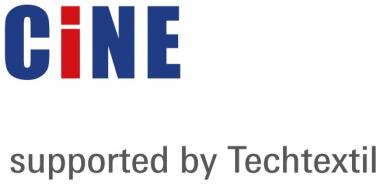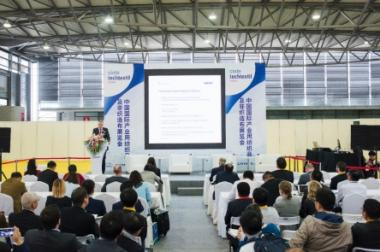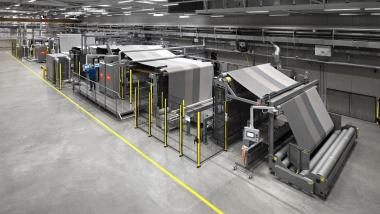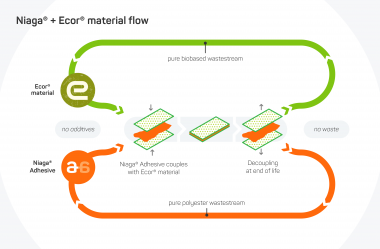China’s booming automotive market presents opportunities for nonwovens producers at China International Nonwovens Expo
China is the world’s undisputed front-runner in the global car market, leading the way in both production and sales. 2018 saw 27.8 million vehicles produced and domestic sales of 28.1 million, and while these numbers were down slightly year-on-year, the opportunities for global textile producers are still unrivalled given the overall size of the market. These opportunities can best be explored at this year’s biennial China International Nonwovens Expo & Forum (CINE – supported by Techtextil), which runs from 3 – 5 June in Shanghai.
While CINE features nonwovens & nonwoven products, machinery for nonwovens and raw materials & chemicals for nonwovens for a wide range of applications, it is the potential in the automotive sector that is generating a lot of talk before this June’s event. And considering only around 50% of demand for automotive textiles is met by domestic output, the opportunities for imports from overseas suppliers is high.
While new car sales in China dropped for the first time last year since 1992, production still reached 27.8 million vehicles, including 23.5 million passenger cars and 4.3 million commercial vehicles. Furthermore, strong growth is still evident in new energy vehicle (NEV) sales, as well as exports of all vehicle types. NEV production totalled 1.27 million units last year, a staggering 60% increase, while sales grew by nearly 62%. More e-vehicles are sold in China than rest of the world combined, while the government recently set a target of selling 7 million e-vehicles by 2025, ensuring growth in this sector will remain robust for some time. Exports of all vehicle types in 2018 did not grow as fast as NEVs, but the 1.04 million vehicles produced for overseas markets last year still represented growth of 16.8%.
Premium automotive industry buyers attend CINE
Given CINE’s strong reputation in the Chinese nonwovens sector, a number of leading automobile brands, and textile suppliers to these companies, source at the fair. Previous buyers have included Autoliv, Honeywell, Johnson Controls, Lear Corporation, Lydall, Toyota Boshoku, Volkswagen, Wangbo Co Ltd and more.
This edition, buyers such as these can source from a range of automotive nonwovens suppliers. This includes Shanghai Shenda, one of the country’s largest producer of automotive textiles, who will group together a number of automotive interior suppliers.
This year the fair will take place in a new venue, the Shanghai Convention & Exhibition Center of International Sourcing, located conveniently between Hongqiao airport and downtown Shanghai. Visitor registration for the fair is now open and can be accessed here: http://vis.eastfair.com/CINEPCEN/reg.aspx.
Messe Frankfurt














